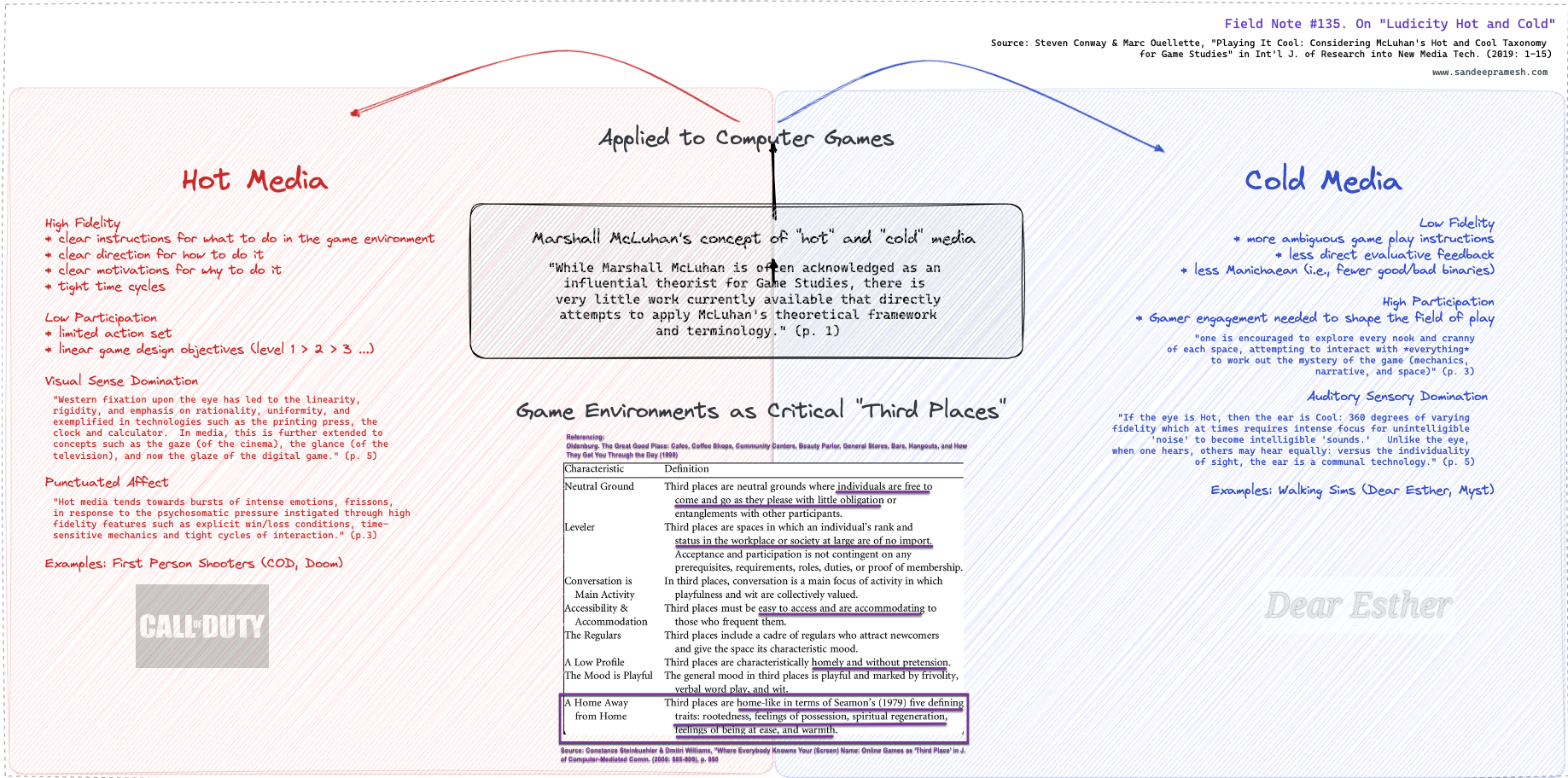Source: Steven Conway & Marc Ouellette, "Playing It Cool: Considering McLuhan's Hot and Cool Taxonomy for Game Studies" in Int'l J. of Research into New Media Tech. (2019: 1-15)
The Context.
What game are you playing?
There is a view that video games are frivolous activities that one "grows out of" eventually. So the uncritical view goes: games are a waste of time that distract individuals from more "productive" activities.
This view is limited and wrong.
From physical card games to MUDs (text-based multi-user dungeons) to MMOs (massively multiplayer online games) and its iterations, the endurance of gaming as an activity is undeniable.
Modern games are not games in the limited sense. Rather, they may be understood as "third places" where "individuals can gather to socialize informally beyond the workplace and home." (Constance Steinkuehler & Dmitri Williams, "Where Everybody Knowns Your (Screen) Name: Online Games as 'Third Place' in J. of Computer-Mediated Comm. (2006: 885-909), p. 889)
The attributes of this "third place" are powerful in combination and depicted in the attached "Map":
- neutral ground
- leveler (no value to off-line reputational equity; no incumbent "fame" advantage unlike other social platforms like TWTR, LNKD, etc.)
- conversation space
- easy access
- presence of regulars
- low pretense
- playful
- home away from home: "rootedness, feelings of possession, spiritual regeneration, feelings of being at ease, and warmth" (Oldenburg, p. 890)
Against this backdrop arises game studies. And, against the backdrop of game studies, arises the motivation for the piece treated in this Note:
"While Marshall McLuhan is often acknowledged as an influential theorist for Game Studies, there is very little work currently available that directly attempts to apply McLuhan's theoretical framework and terminology." (Conway & Ouellette, p.1)
The work done here is to apply McLuhan's conception of "hot" and "cold" media to the study of the modern computer game.
As an introspective prompt, I return to the question at the top: what game are you playing? One might query how McLuhan's hot and cold spectrum applies to the game of their own life.
Specifically, the dimension of temporality in gameplay design brings this introspection to the front; an overheating or freezing has ill-effects:
"This instantiates the difference between having things appear (at hand) versus a sense of urgency to find things: the terror caused by the abstract uniformity of the clock, whether in speed run or in time-sensitive mechanics, is dissimilar to the anxiety felt at not knowing how to interact at all." (p. 4)
The Map.
